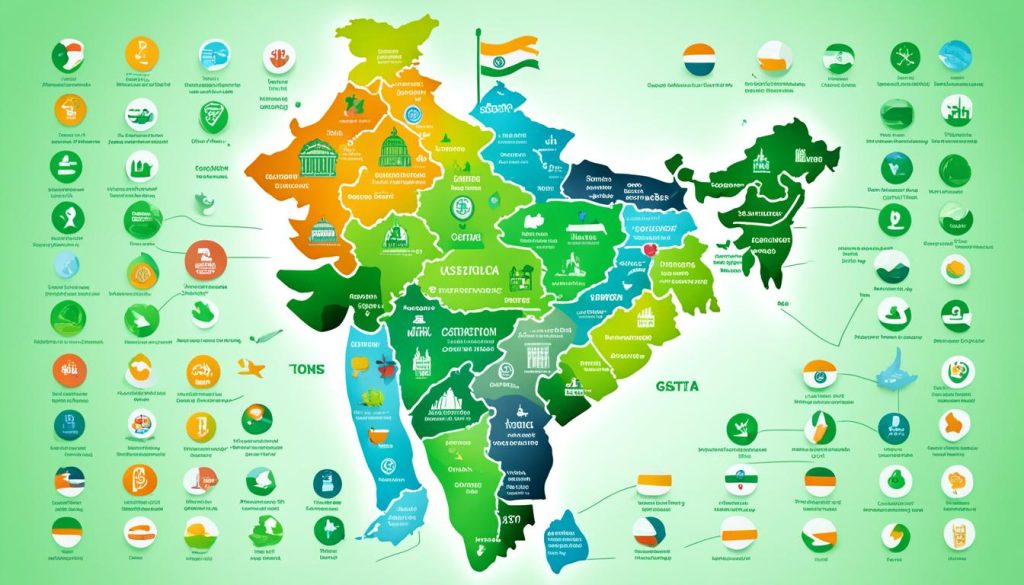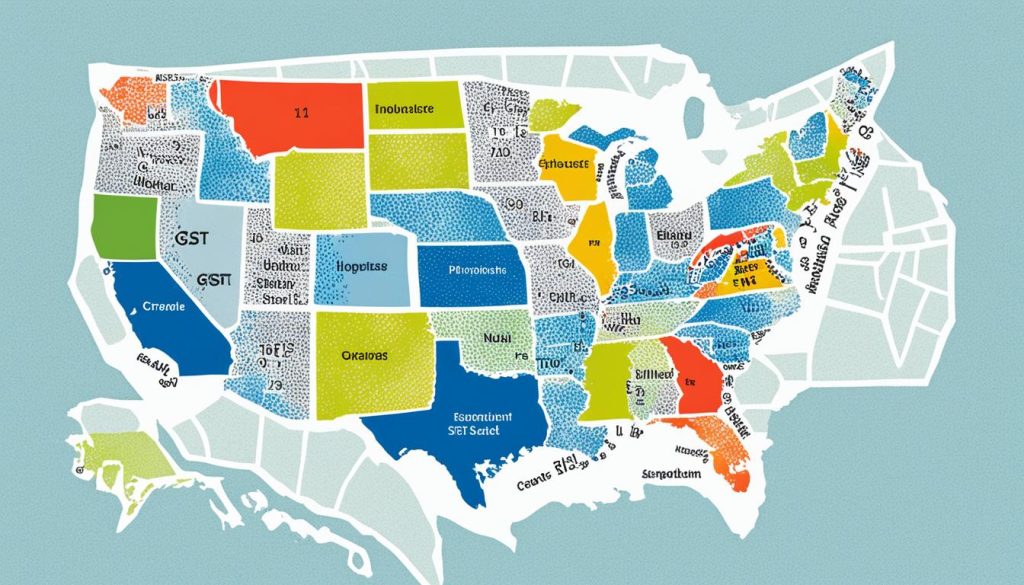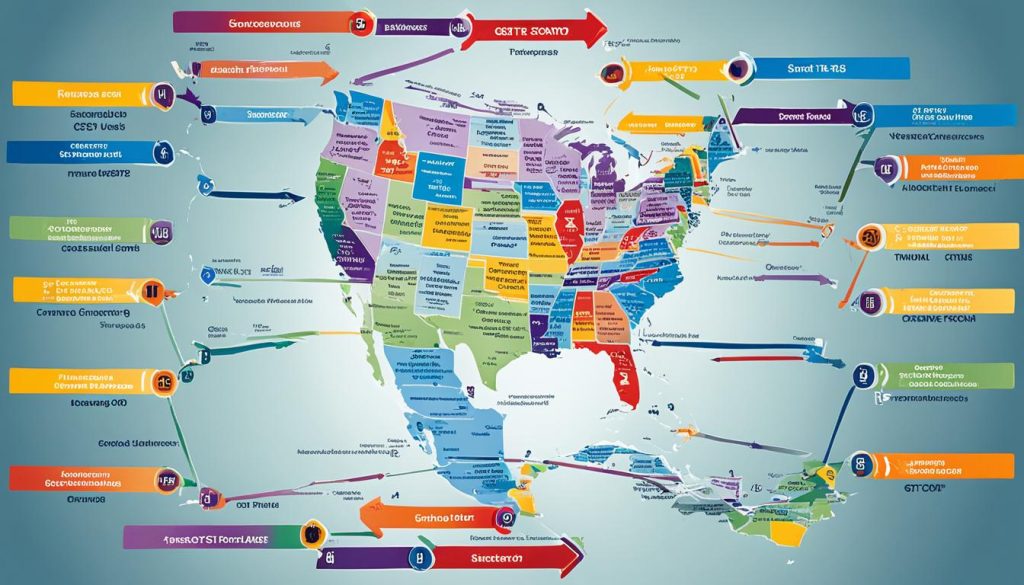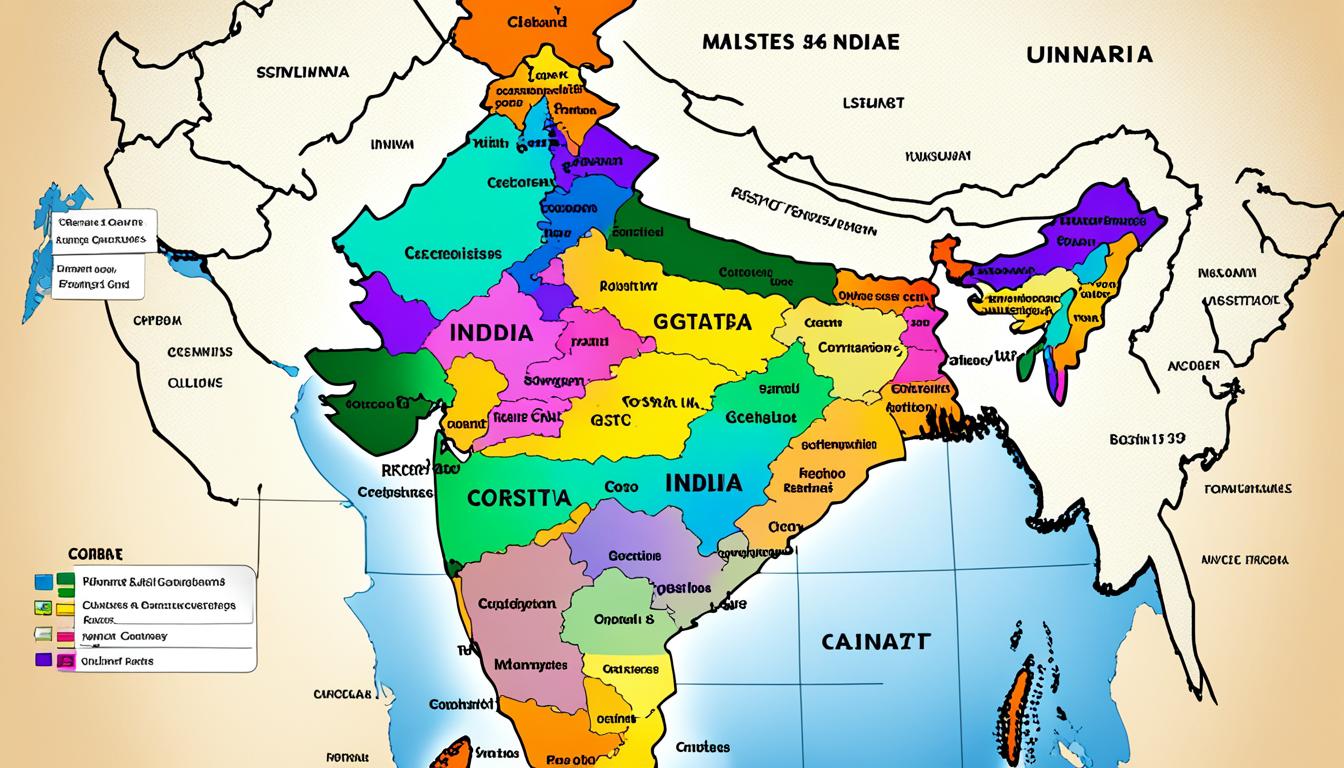The 36 GST State Code is a unique identification number assigned to each state in India for the purpose of the Goods and Services Tax (GST). GST is a unified tax system implemented in India to replace multiple taxes imposed by different states. The 36 GST State Code helps in identifying the state from which a particular business is registered and enables seamless tax administration across the country.
Each state is assigned a specific code that is incorporated into the GSTIN (Goods and Services Tax Identification Number) of businesses registered in that state. The 36 GST State Code is an essential component for businesses to comply with GST regulations and streamline their tax processes.
What is the 36 GST State Code?
The 36 GST State Code for Telangana is ‘TG’. This code is used to represent the state of Telangana in the GSTINs of businesses registered in Telangana. The 36 GST State Code is an important part of the GSTIN, which is a 15-digit alphanumeric number used for identification and tracking of businesses under the GST regime. Businesses in Telangana need to use the 36 GST State Code ‘TG’ while generating their GSTINs and for all GST-related transactions within the state.
Benefits of 36 GST State Code
The 36 GST State Code offers numerous advantages for businesses operating in India. These benefits make it an essential component of the Goods and Services Tax (GST) system. Let’s explore some of the key advantages of the 36 GST State Code:
- Improved Compliance: The 36 GST State Code streamlines tax compliance for businesses by categorizing transactions based on the respective Indian states. This ensures accuracy and facilitates seamless tax filing processes.
- Easier Identification: By assigning unique codes to each state, the 36 GST State Code simplifies identification of the state from which a particular transaction originated. This eliminates confusion and enhances efficiency in the GSTIN system.
- Business Expansion: The state-wise GST codes allow businesses to expand their operations across different states in India. With a single GSTIN combined with the appropriate state code, companies can easily navigate the complexities of interstate transactions.
- Accurate Tax Calculation: The 36 GST State Code helps ensure accurate tax calculations by providing a clear framework for categorizing transactions. Businesses can determine the correct state tax rates based on the specific code, promoting transparency and minimizing errors.
- Seamless Inter-State Transactions: With the 36 GST State Code, cross-state transactions become streamlined and hassle-free. Businesses can use the code to identify the applicable tax rates and comply with regional tax regulations, facilitating smooth inter-state trade.
- Uniformity: The implementation of the 36 GST State Code ensures uniformity in the taxation system across India. This promotes consistency and facilitates a level playing field for businesses operating in different states of the country.

These benefits highlight the advantages of using the 36 GST State Code in the GSTIN system. By leveraging the statewise codes, businesses can simplify tax compliance, enhance accuracy, facilitate inter-state transactions, and promote uniformity in the Indian taxation landscape.
How is the 36 GST State Code used in GSTINs?
The 36 GST State Code plays a crucial role in the structure and composition of the Goods and Services Tax Identification Number (GSTIN). GSTIN is a unique 15-digit alphanumeric number assigned to businesses registered under the Goods and Services Tax (GST) system in India.
The GSTIN is designed to provide a uniform identification number to facilitate seamless tax administration and compliance. It consists of various components, including the 36 GST State Code, which signifies the state under which the business is registered.
- The first two digits represent the state code, which is the numerical 36 for all states and union territories in India.
- Next 10 digits comprise the PAN (Permanent Account Number) or TAN (Tax Deduction and Collection Account Number) of the taxpayer.
- The thirteenth digit indicates the number of registrations within the state using the same PAN/TAN.
- Fourteenth digit represents the entity type of the taxpayer, such as “individual,” “company,” “trust,” etc.
- Fifteenth digit is a checksum digit used for error detection.
The 36 GST State Code ensures that businesses across all states and union territories have consistent identification numbers. This standardization simplifies compliance processes and enables efficient tax administration on a national level.
By employing this uniform GSTIN structure, businesses can easily identify and validate vendors, customers, and suppliers during transactions. It also enables the government to track tax payments, minimize tax evasion, and streamline overall GST compliance.
Difference Between the Telangana State Code and 36 GST State Code?
In the context of the Goods and Services Tax (GST) system in India, it is important to understand the difference between the Telangana State Code and the 36 GST State Code. While both codes are used in the taxation process, they serve distinct purposes and have different applications.
The 36 GST State Code is a unique code assigned to each state and union territory in India. It is used to identify the state or union territory where a business is registered for GST purposes. These codes are standardized across the country and follow a specific format.
On the other hand, the Telangana State Code is specifically designated for the state of Telangana. It represents the unique identification of Telangana within the GST system. The Telangana State Code is derived from the 36 GST State Code and helps to streamline taxation processes within the state.
In terms of functionality, the Telangana State Code works alongside the 36 GST State Code to ensure seamless tax compliance and administration. The combination of these codes helps businesses accurately report their transactions and facilitates the smooth flow of goods and services across state borders.
When comparing the Telangana State Code and the 36 GST State Code, it’s important to note that the former is specific to Telangana, whereas the latter is a broader code applicable to all states and union territories in India. While they serve different purposes, both codes play essential roles in the overall GST framework.

Can 36 GST State Code Be Used for Transactions Outside Telangana?
Yes, the 36 GST State Code can be used for transactions outside Telangana. The 36 GST State Code is a pan-India identification system used by businesses for GST compliance throughout the country. This means that businesses registered in Telangana with the 36 GST State Code ‘TG’ can conduct transactions not only within Telangana but also with other states in India. The code helps in identifying the state of registration of the business and ensures accurate tax calculation and compliance in inter-state trade.
To facilitate seamless transactions across state borders, the GSTIN (Goods and Services Tax Identification Number) is used. GSTIN is a unique 15-digit identification number assigned to every registered business under GST. It incorporates the 36 GST State Code along with other details like the entity’s PAN (Permanent Account Number), entity code, and check digit. This comprehensive identification system enables businesses to comply with GST requirements and ensures transparency and accountability in inter-state transactions.
The use of the 36 GST State Code in inter-state trade has several advantages. It simplifies the taxation process by providing a standardized system for businesses across all states in India. It enables businesses to accurately calculate and report tax liabilities specific to each state and ensures compliance with state-wise regulations and tax rates.
Moreover, the 36 GST State Code allows businesses to claim input tax credit on interstate transactions. Input tax credit is the credit that businesses can avail for the tax paid on inputs (purchases) against the output tax (tax collected on sales). This mechanism helps in preventing cascading taxes and promotes a seamless flow of goods and services across state borders.
In conclusion, the 36 GST State Code, being a pan-India identification system, can be used for transactions outside Telangana. It enables businesses to comply with GST requirements, accurately calculate tax liabilities, and claim input tax credit on interstate transactions. The code plays a pivotal role in fostering seamless inter-state trade and ensuring a transparent and efficient indirect tax regime in India.

Conclusion
In conclusion, the 36 GST State Code holds immense significance in the GST regime of India. It serves as a standardized identification system for businesses across all states, facilitating seamless tax administration and inter-state transactions. By incorporating the correct 36 GST State Code into their GSTINs, businesses can ensure compliance with state-specific tax regulations and streamline their tax processes.

